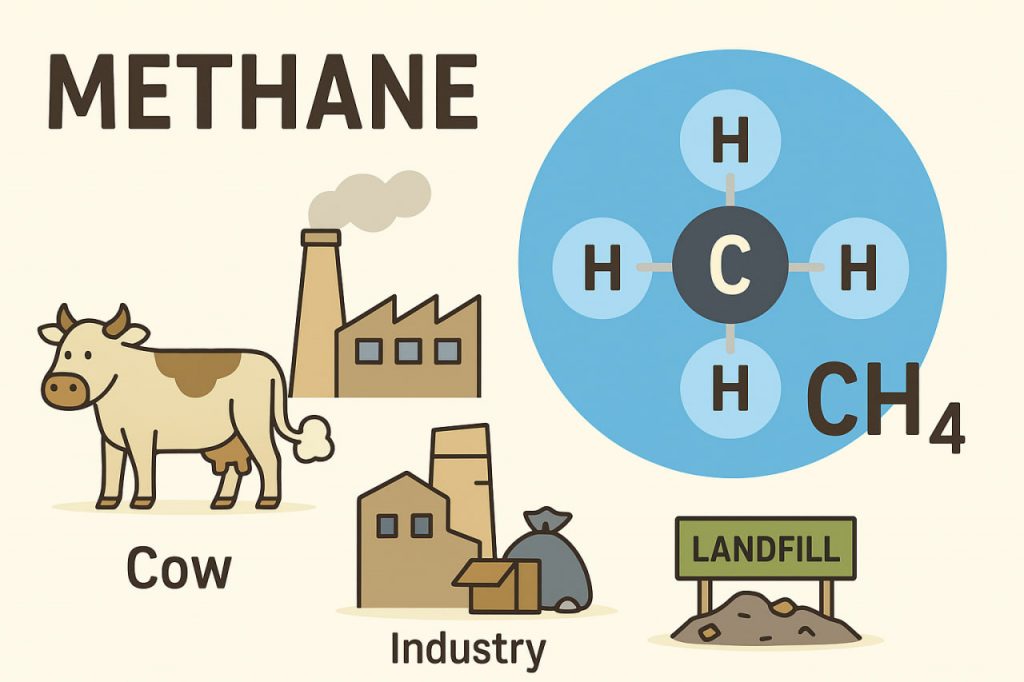Methane (CH₄) is a simple hydrocarbon composed of one carbon atom and four hydrogen atoms. It is the main component of natural gas and one of the most abundant organic molecules on Earth. Methane is colorless, odorless in its pure form, and highly flammable. It is widely used as a fuel but also plays a significant role as a greenhouse gas, influencing Earth’s climate.
Natural Sources of Methane
Methane is produced naturally through both biological and geological processes. Wetlands are the largest natural source, where microorganisms release methane during the decomposition of organic matter in oxygen-poor conditions. Other natural sources include termites, oceans, wildfires, and geological seeps from Earth’s crust. Methane is also stored in large amounts in methane hydrates—ice-like compounds found under the ocean floor and in permafrost.
Human-Related Sources
Human activities significantly increase methane emissions. Agriculture is a leading contributor, particularly from livestock such as cows and sheep, which produce methane during digestion. Rice paddies also release methane due to anaerobic decomposition in flooded soils. Other major sources include fossil fuel extraction, landfills, and incomplete combustion of biomass. These emissions have raised atmospheric methane levels far above natural background concentrations.
Properties and Uses
Methane is valued as a clean-burning fuel compared to coal and oil, as it produces less carbon dioxide per unit of energy. It is used for electricity generation, heating, and as a feedstock in chemical industries to produce hydrogen, methanol, and ammonia. However, because it is highly flammable, methane requires careful handling and monitoring to prevent leaks and explosions.
Environmental Impact
Methane is a powerful greenhouse gas, with a global warming potential about 25 times greater than carbon dioxide over a 100-year period. Although it remains in the atmosphere for a shorter time than CO₂, its strong heat-trapping ability makes it a critical factor in climate change. Rising methane emissions from thawing permafrost and human activities raise concerns about accelerating global warming.
Monitoring and Reduction
Scientists monitor methane emissions using satellites, ground-based sensors, and atmospheric measurements. Efforts to reduce emissions include improving waste management, capturing methane from landfills, upgrading oil and gas infrastructure, and adopting sustainable agricultural practices. These measures are essential to mitigate methane’s role in climate change.
Conclusion
Methane is both an essential resource and an environmental challenge. While it provides energy and industrial applications, its strong impact on the climate makes it one of the most important gases to monitor and control. Balancing its benefits with environmental risks is crucial for a sustainable future.
Glossary
- Methane (CH₄) – a simple hydrocarbon and major greenhouse gas.
- Methane hydrates – ice-like compounds containing methane, found in permafrost and ocean sediments.
- Anaerobic decomposition – breakdown of organic matter without oxygen, producing methane.
- Greenhouse gas – gas that traps heat in Earth’s atmosphere.
- Global warming potential – measure of how strongly a gas contributes to climate change compared to CO₂.


